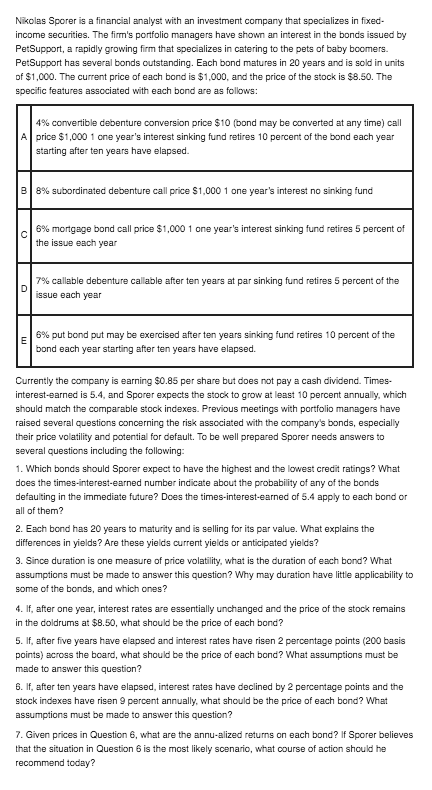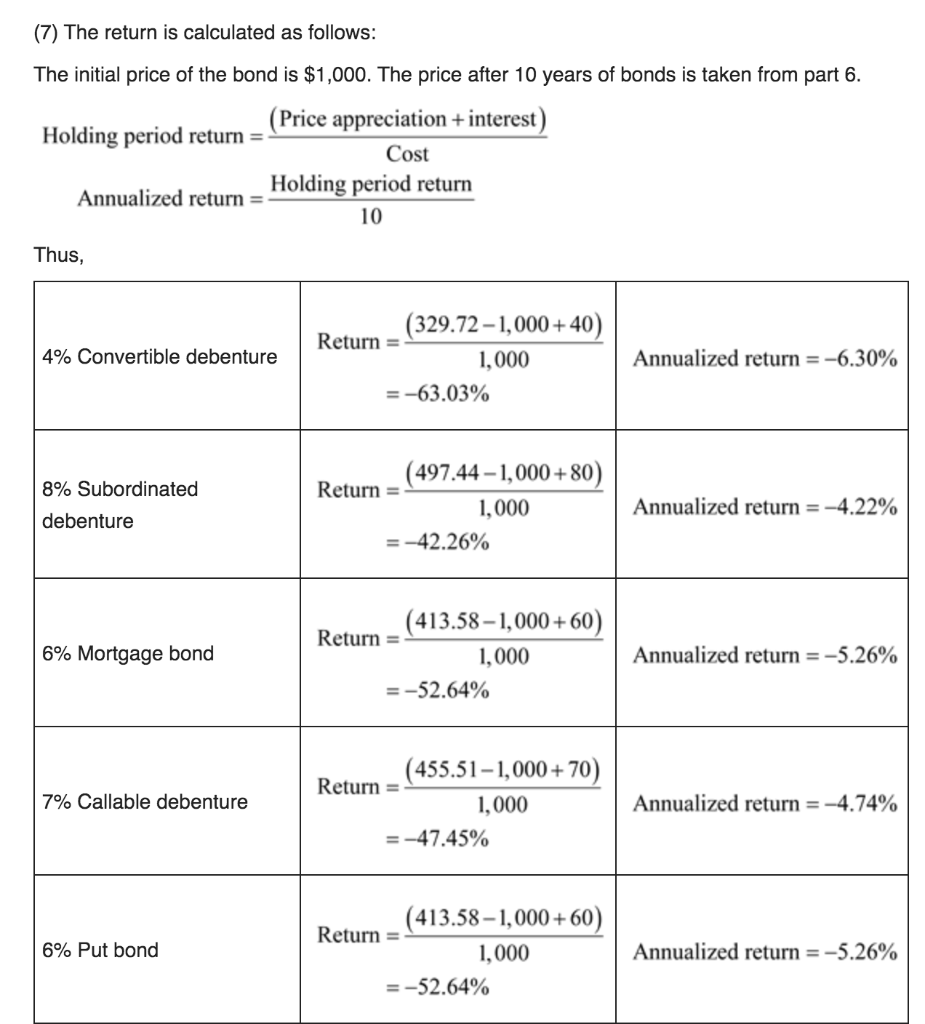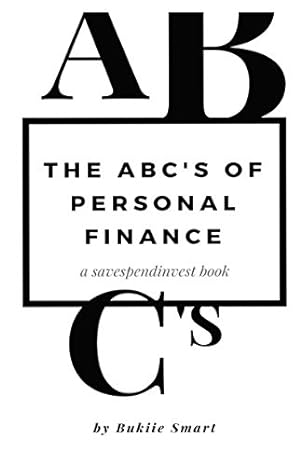Chapter 16, Problem 2IC about sporer the financial analyst, I'm just after some further clarification.
In Q7, just curious as to why used Annualised return= holding period return/10 time
rather than Annualised return= (1+return)^1/n -1


Nikolas Sporer is a financial analyst with an investment company that specializes in fixed- income securities. The firm's portfolio managers have shown an interest in the bonds issued by Pet Support, a rapidly growing firm that specializes in catering to the pets of baby boomers. PetSupport has several bonds outstanding. Each bond matures in 20 years and is sold in units of $1,000. The current price of each bond is $1,000, and the price of the stock is $8.50. The specific features associated with each bond are as follows: 4% convertible debenture conversion price $10 (bond may be converted at any time) call A price $1,000 1 one year's interest sinking fund retires 10 percent of the bond each year starting after ten years have elapsed. 38% subordinated debenture call price $1,000 1 one year's interest no sinking fund 6% mortgage bond call price $1,000 1 one year's interest sinking fund retires 5 percent of the issue each year D 7% callable debenture callable after ten years at par sinking fund retires 5 percent of the issue each year 6% put bond put may be exercised after ten years sinking fund retires 10 percent of the bond each year starting after ten years have elapsed. Currently the company is earning $0.85 per share but does not pay a cash dividend. Times- interest-earned is 5.4, and Sporer expects the stock to grow at least 10 percent annually, which should match the comparable stock indexes. Previous meetings with portfolio managers have raised several questions concerning the risk associated with the company's bonds, especially their price volatility and potential for default. To be well prepared Sporer needs answers to several questions including the following: 1. Which bonds should Sporer expect to have the highest and the lowest credit ratings? What does the times-interest-earned number indicate about the probability of any of the bonds defaulting in the immediate future? Does the times-interest-earned of 5.4 apply to each bond or all of them? 2. Each bond has 20 years to maturity and is selling for its par value. What explains the differences in yields? Are these yields current yields or anticipated yields? 3. Since duration is one measure of price volatility, what is the duration of each bond? What assumptions must be made to answer this question? Why may duration have little applicability to some of the bonds, and which ones? 4. If, after one year, interest rates are essentially unchanged and the price of the stock remains in the doldrums at $8.50, what should be the price of each bond? 5. If, after five years have elapsed and interest rates have risen 2 percentage points (200 basis points) across the board, what should be the price of each bond? What assumptions must be made to answer this question? 6. If, after ten years have elapsed, interest rates have declined by 2 percentage points and the stock indexes have risen 9 percent annually, what should be the price of each bond? What assumptions must be made to answer this question? 7. Given prices in Question 6, what are the annu-alized returns on each bond? If Sporer believes that the situation in Question 6 is the most likely scenario, what course of action should he recommend today? (7) The return is calculated as follows: The initial price of the bond is $1,000. The price after 10 years of bonds is taken from part 6. (Price appreciation +interest) Holding period return = Cost Holding period return Annualized return = 10 Thus, 4% Convertible debenture (329.72 1,000+40) Return = 1,000 = -63.03% Annualized return =-6.30% 8% Subordinated (497.44 1,000+80) Return = 1,000 Annualized return = -4.22% debenture = -42.26% 6% Mortgage bond (413.58 1,000+60) Return = 1,000 = -52.64% Annualized return = -5.26% (455.51 - 1,000+ 70) Return = 1,000 7% Callable debenture Annualized return = -4.74% = -47.45% 6% Put bond (413.58 1,000+60) Return = 1,000 = -52.64% Annualized return = -5.26%








